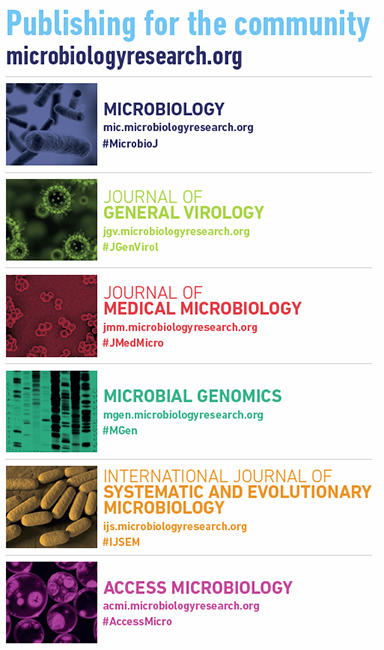Promoting your work
Issue: Arboviruses and their Vectors
06 August 2019 article

In the last issue of Microbiology Today we wrote about open research as an extension of Open Access. In this article we discuss different ways to promote your research (open or otherwise) to help raise your profile as a scientist.
Once your article has been published – whether in a journal or as a preprint – you naturally want to draw attention to your work. There are many ways to do this, from the traditional sharing of PDFs and emails to social media and lay summaries. We suggest that you start by making sure that you have a comprehensive bibliography online, either through your institutional webpage or via ORCID*. ORCID provides a persistent digital identifier that distinguishes you from every other researcher and, through integration in key research workflows such as manuscript and grant submission, supports automated linkages between you and your professional activities ensuring that your work is recognised.

You’ll probably want to start a conversation about your work, which means sharing it widely. Social media can be your friend here (check out our Top tips) but you should also think about platforms which allow a deeper conversation. One we particularly like is ScienceOpen*, a free search and discovery engine which goes beyond search to let users add new articles, create public collections, review articles, write plain language summaries, and even track the impact of their work. Our publishing team have been using ScienceOpen for over a year to boost the impact of activities like the Microbiome collection, and you can check out our publishing page if you want to explore ScienceOpen.
Platforms like ResearchGate, Academia.edu and ScienceOpen allow you to share your papers widely, but please be careful! While the Microbiology Society journals permit authors to share accepted manuscripts on the day of publication, some publishers are much more restrictive and several of the very large publishers have been trying to have research removed from these platforms.
Outreach is an important part of the research cycle and that means you might want to consider writing plain language summaries for your articles. We’ve found that Scholarcy* can be helpful here, using machine learning technology to digest papers into flashcard-style summaries. Another great option is Kudos*, which lets researchers explain their work in simple language and track the impact through a dashboard, showing the effects of communication plans. The Kudos team say that sharing these plain language summaries can help boost readership by around 23%.
Last but not least, don’t overlook the value of blogs and press releases. These longer-form pieces of content allow you to write more about your research, explaining what the work is about and why it is important in a way that complements both the article and your shorter-form social media activities.
Top tips for social media |
|
Keep it simple With millions of posts being shared across social media platforms every day it’s best to keep your post simple. Use keywords that will grab attention and think about interactive formats such as polls or questions that might help start a conversation. Don’t forget to include a hyperlinked DOI, taking the reader to the full text of your article! Use hashtags Hashtags emphasise your post’s relevance and are a great indicator of what is topical or interesting. If your article is particularly timely or topical find the appropriate hashtag and use it – and if nothing else, use the hashtag for the journal your article was published in. Use mentions Mentions help highlight your post to specific users. If you mention your institution, or a co-author, they might share the post with their followers. Don’t forget to mention @MicrobioSoc on Twitter and we’ll share your tweet with our growing community of 35,000+ followers. Include images A picture is worth a thousand words, so find an image relevant to your work and include it in your posts. According to a study conducted by Twitter, tweets with images get 35% more retweets than those without. Get involved Social media is a great way to connect with fellow scientists and interested members of the public. The more exposure you have the more likely people are going to see what you’re posting, so get involved in discussions and share posts when relevant. This is also a great way of increasing your network. Share the love Finally, remember to support the scientific community. If you read an article that you find particularly interesting, do your part to promote that research group’s work too! |
Further reading
Fry N, Marshall H, Mellins-Cohen T. In praise of preprints. Access Microbiology 2019;1:e000013. doi:10.1099/acmi.0.000013
*We do not receive revenue from these initiatives and are promoting them only because our team truly believes they are useful tools for our members.
Image: Dennis Kunkel Microscopy/Science Photo Library.
